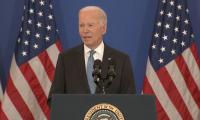Pakistan has one of the fastest population growth rates in the world, and considering an ever-expanding population base, it is estimated that more than 1.6 million marriages happen in the country during the year. Adjusting for household incomes, it is estimated that more than Rs110 billion is spent on weddings on an annual basis.
The wedding economy has a significant direct and indirect economic impact. The direct economic impact can be from expenditures associated with location, catering, clothing, beauty & wellness, and logistics costs – while indirect expenditures can be associated with supply chains associated with all categories mentioned above. A government policy that mandates that only one entree can be served at a wedding eventually leads to a drop in demand for associated food products during the wedding season, and vice versa.
Marriage constitutes one of the major savings goals of most households in the country, in addition to education, purchase of a permanent residence, and retirement – such is the economic importance of marriage to the household, and the economy at large. However, most of this economy is informal in nature, and largely operating on cash. Most locations that are utilized for holding such festive events strictly take payments in cash – they actually discourage any kind of bank transfers, or formal payments in order to avoid tax. Many wedding venues being run by quasi-government institutions also prefer to operate on cash, as they outsource the operations of the venues to third parties, effectively absolving themselves of any responsibility to conduct businesses in a formal manner.
Similarly, most (if not all) businesses involved in wedding clothes also operate strictly on cash. Many simply avoid taking any payments through formal banking channels, effectively evading taxes. There are dozens of markets in major urban centers that exclusively cater to the wedding economy, and barely any such market would be willing to take any formal payments, thereby avoiding tax in the process. Similarly, establishments operating in the beauty and wellness space also strictly operate on cash, with the exception of a few large entities. Similar transaction modalities are also prevalent in the case of catering businesses, decoration activities, and so on. Effectively, the whole industry operates in the cash economy, and actively avoids the formal economy to avoid paying taxes.
For any enterprising tax officer it should be fairly easy to calculate potential expenditure on a wedding, while back-calculating how much tax was paid in the process. This can provide the thread that can lead to further assessment of tax liabilities of various entities involved, including the hosts and all businesses providing services for the event. In an environment where the tax-to-GDP ratio has remained flat for the last one decade, it makes little sense to allow multiple sectors to operate with impunity while operating in the cash economy. There is a strong argument that bringing this into the tax net will drag growth of the segment, and affect thousands of small businesses that are engaged in the segment. However, it is entirely possible to have certain thresholds in place above which a tax can be due depending on the scale and scope of various transactions.
The cash economy is a drag on the economy, which means that it slows down the velocity of money, or the speed at which money circulates in the economy, thereby resulting in an overall slowdown in economic growth. Currency in Circulation continues to be more than Rs8.5 trillion steadily increasing over the last few years. Despite improvement in payment gateways, and mechanisms there continues to be strong resistance against adoption of such formal mechanisms to avoid taxation, and the overarching interference of the government. There is a case here to bring many such businesses in the tax net through introduction of minimal tax rates, and incentives such that businesses are actually encouraged to become part of the formal economy, rather than operating outside it.
A standardized tax rate if imposed across the board increases the cost of doing business, and even consumers avoid it because it is inflationary for them. However, if a minimal tax rate is applied through such segments, and consumers are encouraged, or provided an automatic rebate against such formal purchases, there will be an incentive to become part of the formal economy. The way the state approaches taxes needs to change, such that it focuses more on expanding the tax net, and making business activities more formal, rather than celebrating tax revenue growth targets in nominal terms. There exists a case to onboard small and medium businesses into the formal economy by providing tax breaks, and minimal tax rates for transactions processed, or incomes generated.
The approach often taken up by authorities is that of stick, and threats, and closure of businesses – when what needs to be done is to take up an approach that resembles a carrot, such that businesses are incentivized to operate in a formal manner. Recent reports of mobile connections, and identity cards being blocked is yet another stick-based approach which actually increases the trust deficit that exists between the state, and the business. An approach that incentivizes tax payments through discounted utility bills, or access to credit, or any other such incentive can be the carrot that can get the job done – while reducing the trust deficit that exists between the state, and businesses.
The writer is an independent macroeconomist.
Since 2020, smoking rates in EU have decreased by only 1%, as revealed by Special Eurobarometer 539
Battle between good and bad actors increasingly hinges on creativity and technological prowess
Some of this contemporary music is profoundly moving, with exceptional compositions produced in state-of-the-art studios
Marxist historians interpreted history through concepts of class struggle and materialism
Welcome to G-zero world a chaotic free-for-all where global leadership is absent
Export diversification and integration within global value chains remain a major challenge







